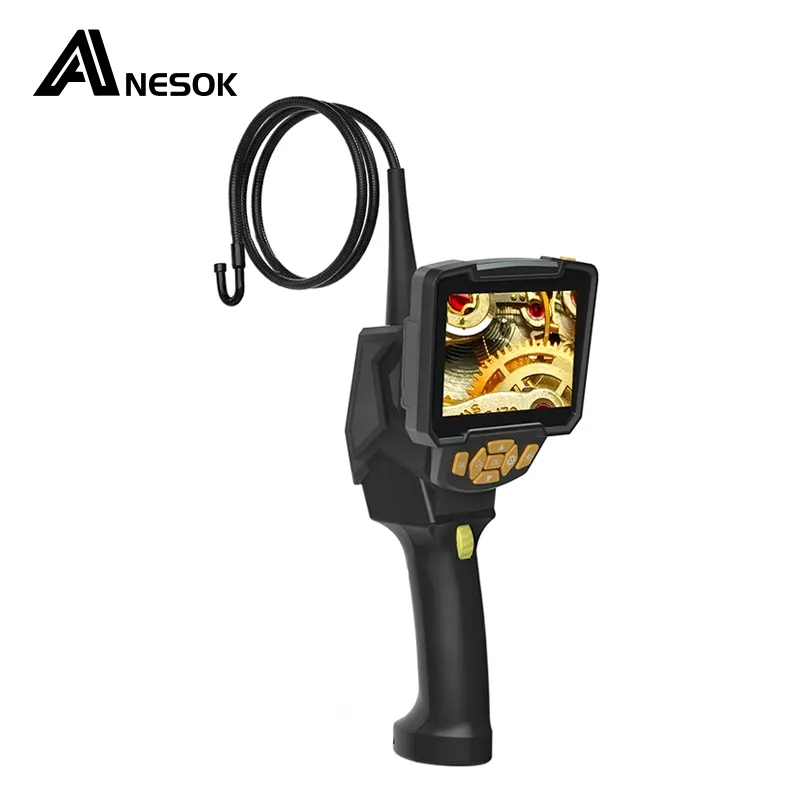- English
- שפה עברית
- Bosanski
- Punjabi
- O'zbek
- Español
- Português
- русский
- Français
- 日本語
- Deutsch
- tiếng Việt
- Italiano
- Nederlands
- ภาษาไทย
- Polski
- 한국어
- Svenska
- magyar
- Malay
- বাংলা ভাষার
- Dansk
- Suomi
- हिन्दी
- Pilipino
- Türkçe
- Gaeilge
- العربية
- Indonesia
- Norsk
- تمل
- český
- ελληνικά
- український
- فارسی
- தமிழ்
- తెలుగు
- नेपाली
- български
- Latine
- Қазақша
- Azərbaycan
- Slovenský jazyk
- ქართული
- Română
- Slovenski
- मराठी
- Srpski језик
- Hrvatski
- Eesti Keel
Current status of localization of industrial endoscopes
2023-01-04
China began to import industrial endoscopes from abroad in the 1970s and 1980s. It was mainly used for the internal redundant control of aerospace products and the quality inspection of some parts, and then gradually applied to various industrial fields. Now it has entered the practical stage. It is increasingly used in product quality control and equipment operation and maintenance, and has developed into a routine detection method.

In the past ten years or so, many industrial endoscope brands have appeared in China. After years of development, they have significantly improved in image processing software and hardware systems and appearance industrial design. But in general, domestic brands are still in the stage of catching up, and their products are mainly concentrated in the low-end market with serious homogeneity, high competition pressure, low added value and poor economic benefits. At present, a considerable part of the application of domestic high-end equipment is still monopolized by foreign endoscope manufacturers. To establish high-quality products and influence comparable to international brands means that there is still a long way to go.
Yipincheng, as an earlier manufacturer of industrial endoscope products in China, has been committed to the research and development of high-end industrial endoscope products in recent years, especially the self-developed three-dimensional measurement high-definition industrial endoscope, which has realized the domestic endoscope from Limited to the leap from qualitative to precise quantitative analysis, its image clarity and measurement accuracy are comparable to imported brands even in high-end manufacturing industries. At present, this product has won many large orders in the equipment manufacturing and aerospace fields with higher testing requirements and stricter standards, which also means that domestic brands have been recognized by many customers.
Compared with domestic brands, the cost of imported products is higher, the delivery schedule is uncontrollable, the after-sales response time is long, the maintenance cycle is long, and the maintenance cost is high. It is difficult to implement customized solutions, and it may be affected by the epidemic and foreign export control of high-end equipment and other impacts, which affect normal delivery, use and maintenance. The ill effects of this situation are likely to intensify in the future as the trade war intensifies.
With the overall improvement of the country's comprehensive strength, the importance of core technologies with independent intellectual property rights has become increasingly apparent. The country is also actively supporting the localization of parts and equipment at the policy level, so as to reduce foreign restrictions on key equipment, core technologies, and core components as much as possible. negative impact on exports. The problem of non-localization makes the development of domestic equipment easy to be controlled by others. Not only do they have to bear high costs and time costs, but also they have to bear a very passive situation once a more extreme situation occurs. Strong manufacturing makes China strong. Therefore, it is imperative to develop domestic equipment manufacturing, especially high-end equipment manufacturing, and master its own core technologies.
As an important piece of testing equipment used in the equipment manufacturing industry, industrial endoscopes are widely used in the process of equipment manufacturing, repair and maintenance, and will play more roles in improving the reliability of domestic equipment. Therefore, domestic industrial endoscope research and development enterprises should actively respond to the government's call, vigorously develop the technical level, and develop more advantageous products to reduce domestic dependence on imported brands.
Yipincheng has identified industrial endoscope systems, industrial visual inspection systems, and intelligent robots as long-term research and development directions in the future, with a view to integrating and integrating machine vision software systems related to endoscopes with industrial automation and intelligent inspection systems. Provide users with more stable, reliable, safe and efficient detection solutions.

In the past ten years or so, many industrial endoscope brands have appeared in China. After years of development, they have significantly improved in image processing software and hardware systems and appearance industrial design. But in general, domestic brands are still in the stage of catching up, and their products are mainly concentrated in the low-end market with serious homogeneity, high competition pressure, low added value and poor economic benefits. At present, a considerable part of the application of domestic high-end equipment is still monopolized by foreign endoscope manufacturers. To establish high-quality products and influence comparable to international brands means that there is still a long way to go.
Yipincheng, as an earlier manufacturer of industrial endoscope products in China, has been committed to the research and development of high-end industrial endoscope products in recent years, especially the self-developed three-dimensional measurement high-definition industrial endoscope, which has realized the domestic endoscope from Limited to the leap from qualitative to precise quantitative analysis, its image clarity and measurement accuracy are comparable to imported brands even in high-end manufacturing industries. At present, this product has won many large orders in the equipment manufacturing and aerospace fields with higher testing requirements and stricter standards, which also means that domestic brands have been recognized by many customers.
Compared with domestic brands, the cost of imported products is higher, the delivery schedule is uncontrollable, the after-sales response time is long, the maintenance cycle is long, and the maintenance cost is high. It is difficult to implement customized solutions, and it may be affected by the epidemic and foreign export control of high-end equipment and other impacts, which affect normal delivery, use and maintenance. The ill effects of this situation are likely to intensify in the future as the trade war intensifies.
With the overall improvement of the country's comprehensive strength, the importance of core technologies with independent intellectual property rights has become increasingly apparent. The country is also actively supporting the localization of parts and equipment at the policy level, so as to reduce foreign restrictions on key equipment, core technologies, and core components as much as possible. negative impact on exports. The problem of non-localization makes the development of domestic equipment easy to be controlled by others. Not only do they have to bear high costs and time costs, but also they have to bear a very passive situation once a more extreme situation occurs. Strong manufacturing makes China strong. Therefore, it is imperative to develop domestic equipment manufacturing, especially high-end equipment manufacturing, and master its own core technologies.
As an important piece of testing equipment used in the equipment manufacturing industry, industrial endoscopes are widely used in the process of equipment manufacturing, repair and maintenance, and will play more roles in improving the reliability of domestic equipment. Therefore, domestic industrial endoscope research and development enterprises should actively respond to the government's call, vigorously develop the technical level, and develop more advantageous products to reduce domestic dependence on imported brands.
Yipincheng has identified industrial endoscope systems, industrial visual inspection systems, and intelligent robots as long-term research and development directions in the future, with a view to integrating and integrating machine vision software systems related to endoscopes with industrial automation and intelligent inspection systems. Provide users with more stable, reliable, safe and efficient detection solutions.



